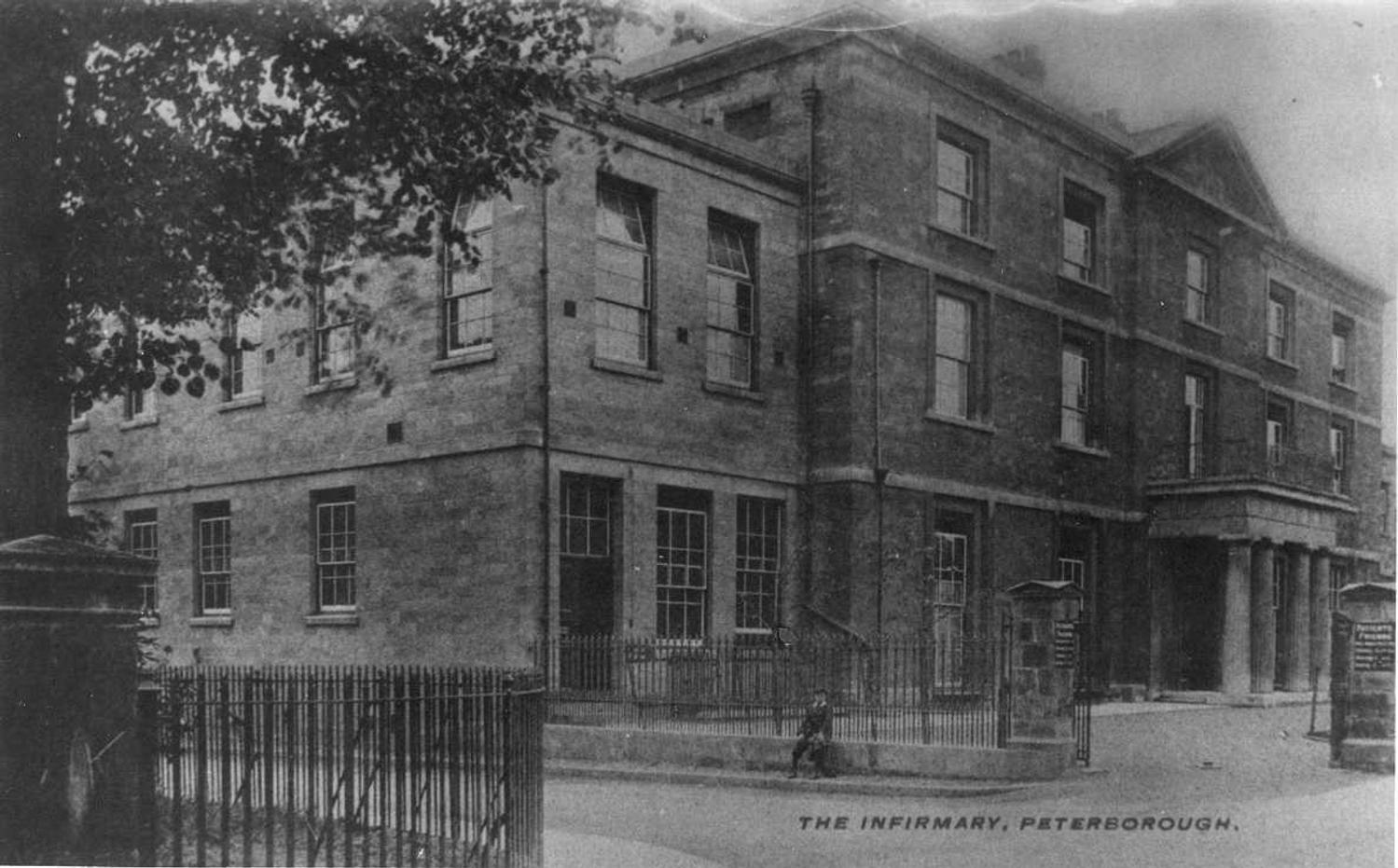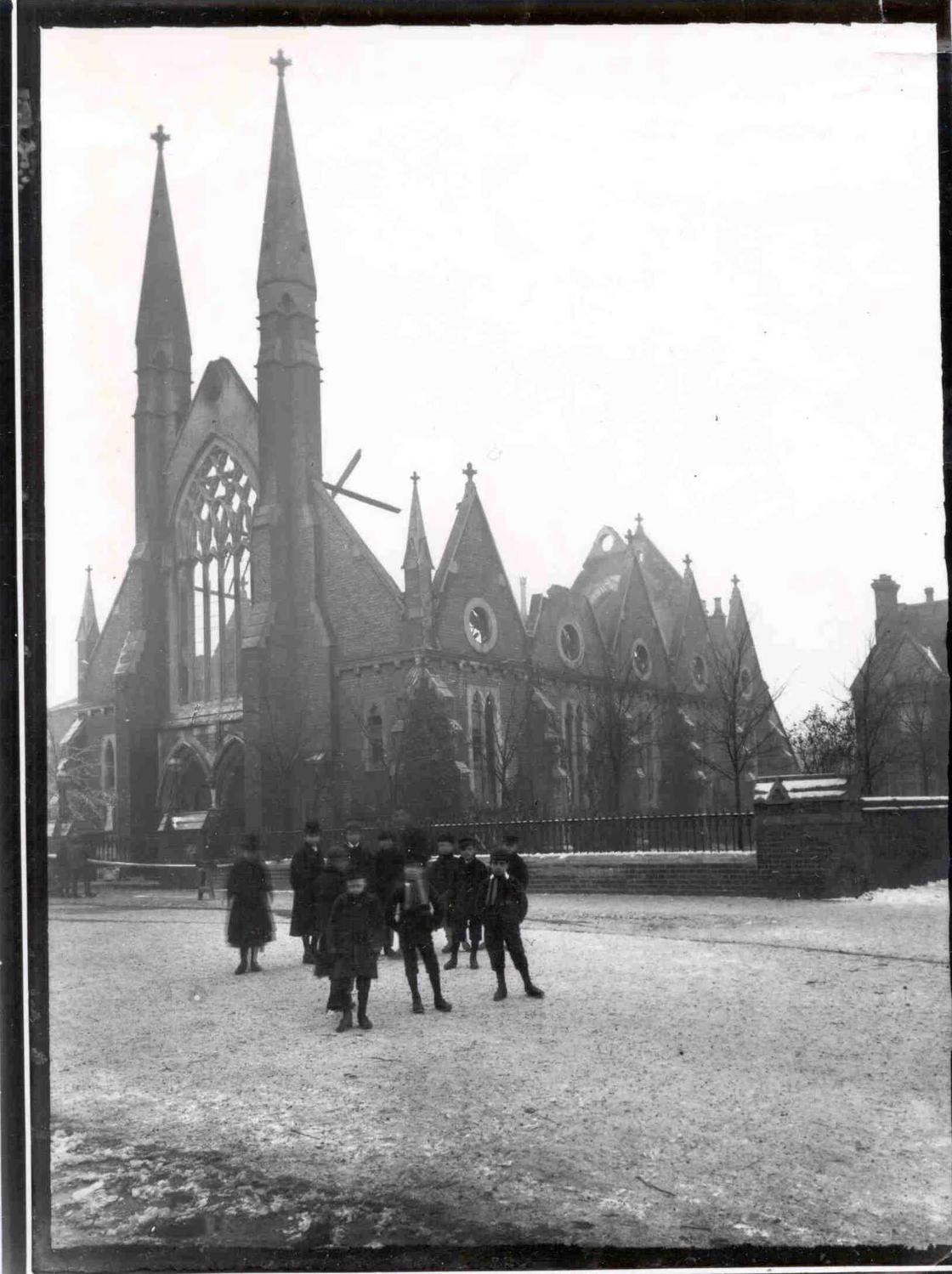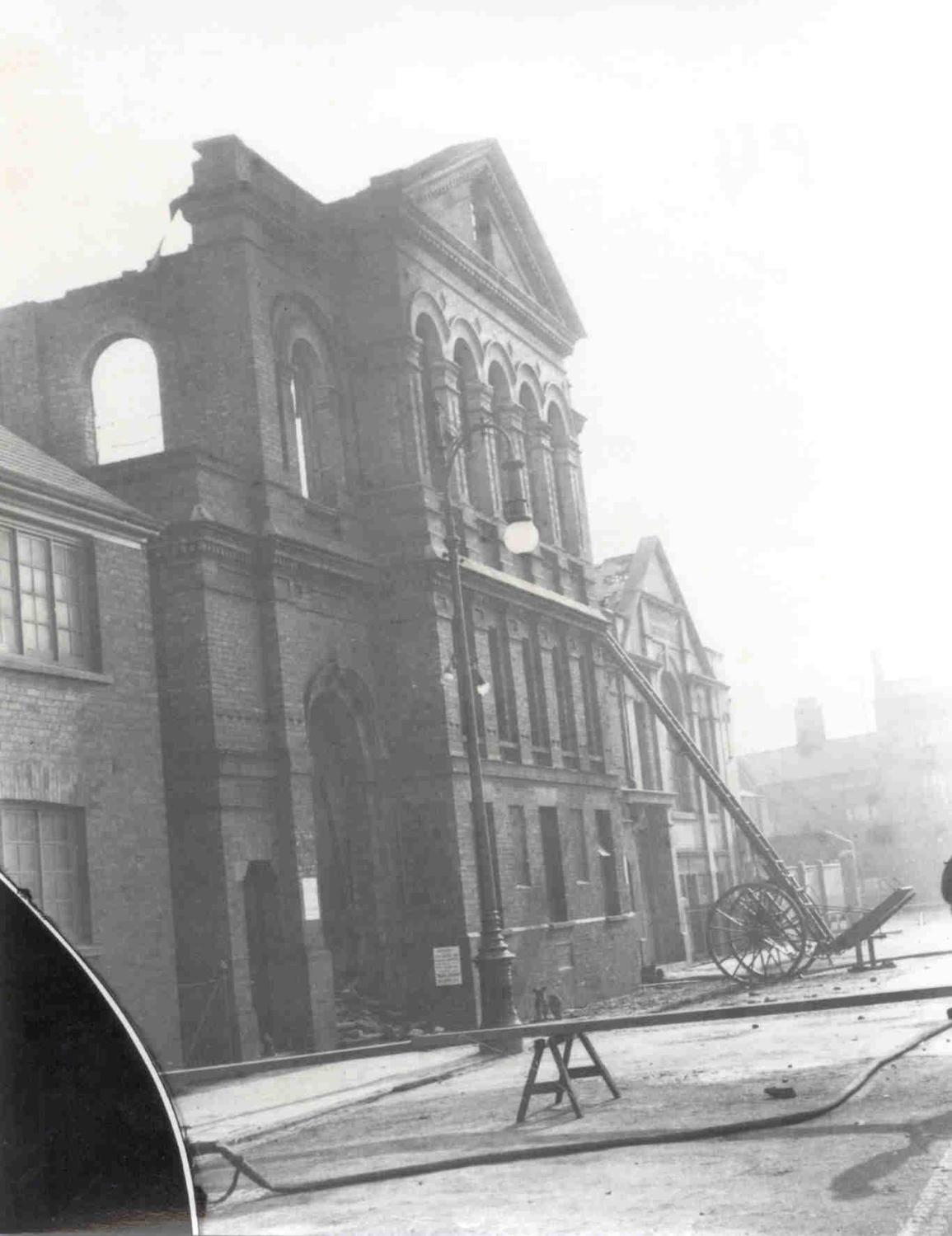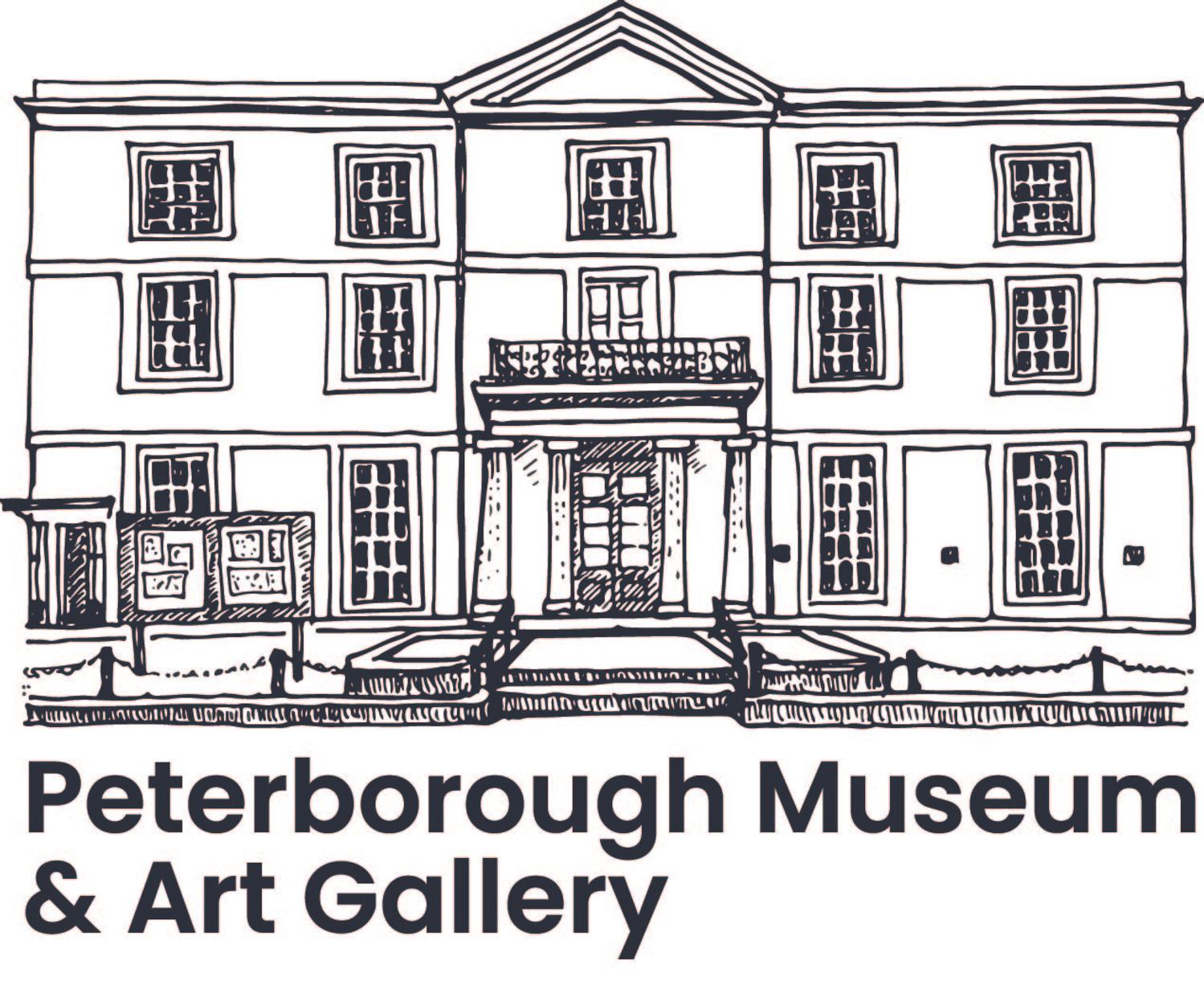Fire Fire
Tuesday 05 December 2023
A look at some of Peterborough's fiery history. 12th C - 21st C
Peterborough has a long history with fire, from the fire which both destroyed and preserved Must Farm in the Late Bronze Age, to the lost Grand Baptist Church which once stood on Queens Street. This article will take a look at a handful of these stories, and how Peterborough came to have one of only two volunteer only fire units still operating in the UK.
The Great Fire of Peterborough 1116 (AD)
A fire breaks out, destroying much of the monastery and town, seemingly from an unattended fire in the Abbey's bakery. The Anglo- Saxon Chronicle says “all the minster of Peterborough burned, and all the buildings except the chapter-house and the dormitory; and besides, the most part of the town also all burned. All this happened on a Friday; that was 4 August…”
Peterborough Castle Destroyed 1116 (AD)
There are varying accounts regarding the building of a castle in Peterborough. Most accounts agree that it was built by Abbot Thorold just after the Norman Conquest, in response to an attack by Hereward and a large group of Vikings (Danes). It was situated north of the abbey, close to the majority of the residents of the town, and was a simple wooden castle on a motte (hill). The castle was either destroyed in a fire in 1116 with most of the town, or was pulled down by Abbot Martin de Bec when he was rebuilding and redesigning the town: it was never rebuilt or replaced. The remains of the motte exist as a small hill in the cathedral grounds and in the street name Touthill Place. It was previously known as Mount Thorold or Turold and is a scheduled monument.
Peterborough Infirmary Fire 1884 (AD)
At midday on 9th May 1884 there was a disastrous fire at Peterborough Infirmary in Priestgate. The infirmary contained 100 patients who were hauled outside onto the grass to safety, along with as much medical equipment as could be saved. Some of the first newspaper reports suggested that patients were still inside the building when the roof collapsed, but these rumours were unfounded and everybody was accounted for; the patients were driven away in cabs or moved to a building supplied by the Dean and Chapter. The fire was caused by an overheated flue and caused £5,000 worth of damage.

The Peterborough Volunteer Fire Brigade 1884 (AD)
Following the disastrous fire which gutted the upper floors of Peterborough's Infirmary, a group of Peterborough businessmen decided to form the Peterborough Volunteer Fire Brigade. The group believed that the infirmary fire could have been handled better, citing a lack of accessible water and the ineffectiveness of the Corporation Fire Brigade.
In 1884 the Brigade were formed and have remained an independent and wholly volunteer crewed Fire Brigade ever since, making it one of only two remaining in the UK, with the other being the Borth Volunteer Fire Unit in Wales.

Fire Destroys the Spade and Shovel 1891 (AD)
In the centre of Eye village on the High Street there was a public house known as the Spade and Shovel. The building was originally thatched, which was a contributing factor in the building’s destruction in October 1891.
The landlord, George Reynolds, had reported smelling burning before he went to bed but could not locate any evidence of it, so assumed the smell was from the chimney. Reports differed as to what happened next. All of the regional papers claimed that the landlord's wife slept away that night because she was fearful of a fire and the landlord slept with two friends who set an alarm to wake them in the early hours of the morning just in case. However the Peterborough Standard claimed he was awoken by a neighbour who had spotted the roof was alight. Mr Reynolds thankfully survived, but the building did not. The local fire engine was ancient and unfit for the job in hand and failed to put out the fire.
A boy on a pony was sent to get the Peterborough Fire brigade, who were newly formed after the disastrous infirmary fire of 1884, but they arrived too late to save the building, the roof having already collapsed before their arrival. They were able to stop the neighbouring thatched building being destroyed though and were very efficient in their arrival. The Spade and Shovel was demolished and replaced by the building presently standing but it is no longer in use as a public house.

References:
Eye, Northampton Mercury, 16 October 1891, p. 8.
A Public House Destroyed by Fire, 17 October 1891, p. 7.
Westgate Church 1891 (AD)
In 1891 a fire ripped through the Westgate Church, destroying much of the buildings interior and roof. Despite the extensive damage the chapel was rebuilt within six months. The chapel still stands on Westgate today narrowly escaping the sprawling Queensgate Shopping Centre development of 1980-82 and surviving yet another fire in 1983.

Great Fire at Peterborough 1905 (AD)
On the morning of the 16th of October 1905 the Queens Street Baptist Church was destroyed by fire. At the time the church was the largest nonconformist place of worship in the city, and had recently undergone a renovation and the construction of the Barrass Memorial Hall directly adjacent to it in 1904.
Records of the fire state that at 8am that morning the church was seen to be completely full of smoke, a window was broken wherein "the whole of the inside burst into a sheet of flame". The roof of the church collapsed around 9am, by which time very little could have been done to save the building. Sketches of the blaze were made by Mrs Hansen Bay from the windows of the Deacons School House, which originally nearby. The Peterborough Standard published one of these sketches on page 6 of the Saturday 21st of October issues, noting how Mrs Hansen's portrayal captures the "devil-fury of the devouring element yet uncontrolled" but also the "unconquered resolution of the firemen". The scene was attended by both the Peterborough Corporation Fire Brigade and Volunteer Fire Brigade, a full story on the event can be read on page 7 of the same issue.
It is unclear what caused the fire, with chapel officials blaming electrical wiring, and the City Electrical Engineer (Who also happened to be the captain of the Corporation Fire Brigade) blaming the churches heating systems.
The Baptist Church was recognised for its architecture "The most famous Baptist edifice in the Easter Midlands", with it's loss recorded in newspapers throughout the nation. Although the loss of this building was a great tragedy for the city, the chapel officials had fortuitously recently reviewed the insurance for the building, with one Eastern Evening News article suggesting they were "fully protected". A new chapel and memorial hall were constructed on Park Road, where the chapel can still be seen today. The memorial hall however was sold and demolished in the 1980's to make way for offices.

The Roller Skating Rink Fire 1910 (AD)
Peterborough's first roller skating rink opened in 1877 and several graced the streets of Peterborough over the coming years. None appeared to be as unfortunate as the Princess Skating Rink, however. The rink, also known as the Princess Royal Skating Rink, was destroyed by fire on Saturday 2nd April 1910 in the morning whilst about twenty people were in the building. Everybody managed to escape unhurt, but the building was completely destroyed.
This is likely to be the same rink that in 1909 was wrecked in a storm. At that time the Princess Skating Rink was not in a building, but housed under a canvas roof. The storm that affected the city left the 'canvas roof torn to shreds and floor ripped up.' Damage to the rink was thought to be in the region of £1,000.
The Peterborough Pavilion Rink appeared in 1911 offering 'the most up to date skating rink in the country.' It contained dressing rooms for ladies and gentlemen and offered children's sessions on a Saturday morning. Most if not all of the skating rinks were sited on land between Park Road and Broadway (which was created many years after the first rink), but as the home to the city's various cinemas and theatres, they would be well located for pleasure-seekers.
References:
Northampton Chronicle and Echo, Saturday 2nd April 1910, page 4, col 3
Lancashire Evening Post. Saturday 4th December 1909, page 4, col 3
Peterborough Advertiser, Saturday 14th January 1911, page 5, col 1
Fire destroys the Fox and Hounds 1920 (AD)
This is a picture of the Fox and Hounds Public House, Thorpe Village near Peterborough. Shown here is a tranquil rural scene recorded outside the Fox and Hounds between 1902-1910.
The building is believed to originate from the 16th century and was destroyed by fire in the 1920’s and replaced by the current two story building. This village is now known as Longthorpe and is an integral part of Peterborough City.
This image has been produced from an original postcard of the time. Publisher unknown, from the Jacqui Catling Collection.
The Cathedrals Lucky Escape 2001 (AD)
On the 22nd November 2001, a fire started that could have destroyed Peterborough Cathedral. A small votive candle, usually used as a symbol of hope and peace, was left nestled in a stack of chairs in the North Choir Aisle. Soon the plastic seats began to turn to flames and a fire raged, while the near-900-year-old building filled with smoke. Due to the vigilance of verger Nigel Long, emergency services arrived soon and extinguished the fire, averting a major disaster. And in the aftermath the next morning it was discovered that there was some damage to the physical structure of the church at the east end of the north aisle, where the window had lost most of its glass. Some carving was destroyed and the screen behind the organ was charred. Much of the Cathedral was coated in soot, forcing a clean-up operation that would take two years to complete. About 200 tonnes of scaffolding was moved in and out and artwork was uncovered for the first time in centuries, such as a number of patterns and a shield on the ceiling near the West Entrance, while all 5,000 pipes of the organ were also disassembled and cleaned.
References:
The Telegraph 24 November 2001
BBC News 22 November 2011
